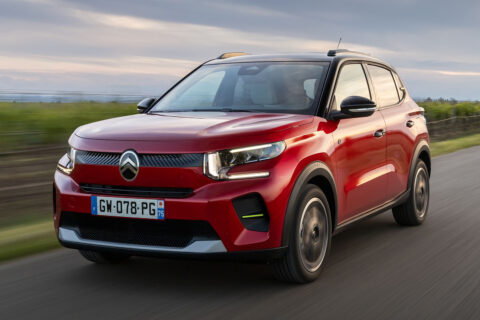Key to that cost parity is the fact the new C3 is underpinned by Stellantis’s new Smart Car platform (no, not that one), which is built to the same philosophy as one used to underpin ultra-low-cost Citroën models sold in emerging markets such as India and Latin America.
It was created using what is unsympathetically called ‘destructive cost engineering’ – essentially, building an entry-level version of a car that can be scaled up and enhanced, rather than optimising the platform for a more expensive car that can then be stripped back. It’s built differently, its parts are sourced differently (meaning relationships with suppliers are then different) and it results in a far less complicated car. Indeed, in the case of the C3, there are 30% fewer parts than before.
The Smart Car platform was conceived primarily as one for front-wheel-drive EVs, yet it can also be fitted with combustion engines (like Stellantis’s new STLA family of platforms for larger models).
The new C3 has increased in height by 10cm over the old car, the only real dimension change. It may look bigger but the new C3 is almost identical in footprint to the outgoing C3 at a smidge over four metres long and 1.76 metres wide.
It would be wrong to call it a crossover: it’s just a hatchback with more ground clearance and extra head room. Still, the designers speak of giving it ‘SUV codes’ to trick the eye into thinking of it as a crossover with skid plates, roof rails and a horizontal bonnet among those features.
I’m not totally sold on the outside and fear in a couple of years the C3 might end up looking quite anonymous. The Citroën badge is new, which will always attract the eye, and everything is quite boxy and upright yet I don’t see the boldness of the Citroën Oli concept car from 2022 that its maker said inspired it. Let’s come back to this in a year or two to see how well it has aged.
